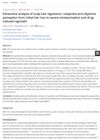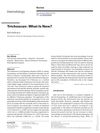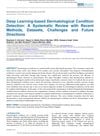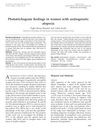Digital Image Processing Tool for Hair Data on Scalp of Patients with Genetic Hair Loss
January 2010
TLDR The tool accurately measures hair count and size on scalps with 79.45% and 68.19% accuracy, respectively.
The research developed a digital image processing tool to quantitatively measure hair parameters, such as the number and size of hairs, on the scalp of patients with androgenetic alopecia. This tool aimed to reduce time and errors associated with human evaluation. The process involved noise reduction, thresholding, and object detection in images to identify hair based on aspect ratio and size. The tool achieved an average accuracy of 79.45% for hair counting and 68.19% for size measurement compared to human assessment.




